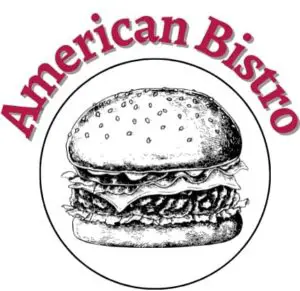Queso, a melted cheese dip, is a popular food item in many households and restaurants. It is often served with tortilla chips or used as a topping for various dishes. However, it’s important to consider the shelf life of queso to avoid any potential health risks that may arise from consuming expired cheese.
Imagine dipping a crispy tortilla chip into a bowl of warm, gooey queso – the perfect snack for an evening in with friends or family. But how long can this delicious appetizer last before it becomes potentially harmful? The answer to this question depends on several factors such as the type of cheese used, storage conditions, and expiration dates.
In this article, we will explore these factors in detail to help you determine how long your queso can last and when it’s time to discard it. We’ll also provide tips on safe handling and consumption practices so that you can enjoy your favorite cheesy dip without any worries.
Key Takeaways
- Queso shelf life is determined by cheese type, preservatives, storage conditions, and packaging method.
- Proper storage of queso is crucial to maintain its quality and prevent spoilage, and it should be stored in an airtight container in the refrigerator below 40°F.
- The average lifespan of queso in the refrigerator ranges from 7 to 10 days, depending on the manufacturer’s instructions, while frozen queso can last up to 6 months.
- Safe handling techniques and detecting signs of spoilage are important for preventing foodborne illnesses, and consuming queso within a reasonable timeframe after opening is recommended for freshness and safety.
Factors Affecting Queso Shelf Life

Various factors, such as the type of cheese used, preservatives added, storage conditions, and packaging method, significantly impact the shelf life of queso.
Cheese type is one of the primary factors that influence how long queso will last. Soft cheeses tend to have a shorter shelf life than hard cheeses since they contain more moisture. Freshly made queso blanco or queso fresco typically lasts only a few days in the refrigerator while aged cheddar or parmesan can last for weeks.
Another crucial factor affecting queso’s shelf life is packaging material. It’s important to store queso in an airtight container to prevent air from coming into contact with the cheese. This prevents mold growth and slows down bacterial activity that leads to spoilage. Glass containers make excellent storage options for soft cheeses like queso blanco or cream cheese since they don’t absorb odors that could affect flavor.
Storage conditions also play a critical role in determining how long queso lasts. Queso should always be stored in the refrigerator below 40°F to inhibit bacterial growth and prevent spoilage. The temperature range within which cheese is stored affects its texture and flavor significantly; storing it at higher temperatures accelerates spoilage processes.
Understanding various factors that impact queso’s shelf life is essential in ensuring its longevity. Cheese type, packaging material, and storage conditions all contribute to how long your favorite dip will last before becoming unfit for consumption.
Understanding expiration dates on packaged products can help you determine when it’s time to throw out old dips without compromising food safety standards or taste preferences.
Understanding Expiration Dates

Accurate knowledge of the shelf life of perishable food items is crucial to ensure food safety and prevent foodborne illnesses, which is why understanding expiration dates is imperative. Here are five important points to consider when it comes to understanding expiration dates:
- Expiration dates are not an exact science but rather a rough estimate based on several factors, such as the type of food, packaging materials, and storage conditions.
- The term ‘expiration date’ refers to the last day that a product can be safely consumed while still retaining its quality and nutritional value. After this date has passed, there is a higher risk of spoilage or contamination.
- Some foods may have more than one type of expiration date: ‘sell by,’ ‘use by,’ and ‘best before.’ Each label has different implications for consumers regarding freshness and safety.
- It’s essential to store perishable products properly to maximize their shelf life. Factors such as temperature, humidity levels, air circulation, and exposure to light can all impact how long a product will stay fresh.
- Consumers should always use common sense when evaluating whether or not a food item is safe to eat. If something smells bad or looks off-color or moldy, it’s best to err on the side of caution.
Understanding food safety and proper storage methods are critical when it comes to ensuring that perishable items like queso remain safe for consumption. In addition to understanding expiration dates, consumers must know how best to store queso in their homes.
Homemade Queso Storage Tips
Proper storage of homemade queso is crucial to maintain its quality and prevent spoilage, which can be achieved by following a few simple tips.
Firstly, it is important to store the queso in an airtight container that has been thoroughly washed and dried. This will prevent any bacteria from entering and contaminating the cheese dip.
Secondly, it is recommended to keep the queso in the refrigerator as soon as possible after it has been made. When storing homemade queso in the fridge, proper placement is key to ensuring longevity.
It should be placed in the back of the fridge where temperatures are most consistent instead of on the door or near areas where temperature fluctuates frequently. Additionally, avoid storing other strong-smelling foods near your queso container as this can affect its taste and aroma.
By properly storing homemade queso using these tips, you can extend its shelf life by up to four days. However, if you notice any signs of spoilage such as mold growth or an off smell or taste, discard it immediately.
While making your own queso at home can produce delicious results, proper storage is essential for maintaining freshness and preventing spoilage. By utilizing an airtight container and placing it in ideal locations within your refrigerator while avoiding contamination from other food items stored nearby can help prolong its lifespan significantly.
Next we’ll discuss how store-bought queso should be stored for maximum freshness without compromising on flavor or texture.
Store-Bought Queso Storage Tips
When it comes to storing store-bought queso, refrigeration is key as it can significantly impact its shelf life. The average lifespan of queso in the refrigerator ranges from 7 to 10 days, depending on the manufacturer’s instructions. To ensure maximum freshness, it is recommended that you consume the queso within this time frame.
Storing open queso can be a bit tricky as it is exposed to air and bacteria, which can cause spoilage and affect its flavor and texture. It’s essential to transfer any leftovers into an airtight container immediately after opening and seal tightly with a lid. Proper storage will help prevent moisture buildup that leads to mold growth or bacterial contamination.
Refrigerating queso leftovers should be done at temperatures between 35°F and 40°F (1.6°C and 4.4°C) for optimal freshness preservation. Always make sure your refrigerator is clean before storing food items such as cheese dips or spreads to avoid cross-contamination with other foods in your fridge.
Proper refrigeration is crucial when storing store-bought queso dips or spreads for prolonged shelf life. However, if you’re not planning to consume the dip within the recommended timeframe, freezing may be an option for longer storage periods. We’ll explore this process further in the next section about how best to freeze queso for extended use without affecting its taste or quality.
Freezing Queso for Longer Shelf Life
One effective way to extend the shelf life of queso is by freezing it, which can help preserve its freshness and flavor for later consumption. Freezing queso is a simple process that involves transferring the leftover portion into an airtight container or freezer bag before placing it in the freezer. When properly stored, queso can last up to 6 months in the freezer without losing its quality.
In addition to extending the shelf life of queso, freezing it can also provide alternative uses for this popular dip. For instance, frozen queso can be used as a topping for nachos or as an ingredient in casseroles and other dishes. However, it’s important to note that once thawed, the texture of queso may change slightly due to moisture loss during freezing.
When thawing frozen queso, there are several techniques you can use depending on your time constraints and preferences. The most straightforward method involves transferring the container from the freezer to the fridge and allowing it to thaw slowly overnight or for at least 12 hours. Alternatively, if you need to thaw your queso quickly, you can place it in a microwave-safe dish and heat it on low power until completely melted while stirring occasionally.
Freezing is an effective way of prolonging the shelf life of leftover queso while retaining its taste and quality. Although some changes in texture may occur after freezing and thawing, frozen queso still remains versatile enough for use in various recipes.
After learning about this technique for preserving your favorite cheese dip longer than usual, let us now explore how we can identify signs that our beloved cheesy goodness has gone bad without much difficulty or hassle!
Signs of Spoiled Queso
Detecting signs of spoiled queso can be challenging, but an effective way to determine its freshness is by examining its appearance, texture, and smell.
One common sign of spoiled queso is a foul odor. If the cheese emits a pungent smell that does not dissipate after being left out for some time, it is likely that it has gone bad.
Another indication of spoilage is mold growth. While some types of cheese have naturally occurring molds that are safe to consume, other varieties should be discarded if any mold appears on the surface.
Aside from these two obvious signs, there are other indicators that the queso may no longer be fresh. For instance, if the texture appears slimy or sticky rather than firm and crumbly, this could indicate bacterial growth or high moisture content in the cheese. Additionally, discoloration or unusual spots on the surface may also signify spoilage.
It’s worth noting that certain types of queso may have unique characteristics due to their aging process or added ingredients; however, any significant deviation from what is typical should signal caution and warrant closer inspection.
Overall, it’s essential to practice safe handling and consumption of queso in order to prevent foodborne illness. This includes storing it properly at appropriate temperatures (below 40°F) and consuming it within a reasonable timeframe (typically no more than one week after opening).
If you suspect that your queso has gone bad based on any of the aforementioned signs or symptoms, do not attempt to salvage it by removing visible mold or trimming off discolored areas – discard it immediately instead. By remaining vigilant about detecting spoilage and taking proper precautions when handling food items like queso, you can help ensure not only your own safety but also that of others who might consume the product as well.
Safe Handling and Consumption of Queso
To ensure safe consumption and handling of queso, it is crucial to store the cheese at appropriate temperatures and consume it within a reasonable timeframe after opening.
Proper storage of queso involves keeping it refrigerated below 40°F or freezing it if you are not planning to use it immediately. When storing, make sure that the cheese is tightly sealed in an airtight container or wrapped in plastic wrap to prevent moisture from entering the cheese.
When handling queso, it is essential to maintain proper hygiene by washing your hands before touching the cheese and using clean utensils when scooping or cutting the cheese. Avoid leaving queso at room temperature for too long as this can cause bacterial growth that could lead to food poisoning.
If you are serving queso at a party or gathering, make sure to keep it in a heated dish above 140°F.
In terms of nutritional value, queso is a good source of protein and calcium but also contains high amounts of fat and sodium. It is important to consume queso in moderation as part of a balanced diet and choose low-fat options if available.
Queso can be enjoyed as a dip for vegetables or chips, added as a topping for tacos or nachos, or used as an ingredient in various recipes such as quesadillas or enchiladas.
Practicing safe handling techniques when dealing with queso is vital for preventing foodborne illness. By properly storing the cheese at appropriate temperatures and using clean utensils when handling, you can enjoy this delicious treat without any health risks.
Remembering to consume queso in moderation as part of a balanced diet will provide its nutritional benefits while avoiding potential health concerns associated with excessive fat and sodium intake.
Frequently Asked Questions
Can you leave queso out on the counter overnight?
It is not recommended to leave queso out on the counter overnight, as it can lead to bacterial growth and potential foodborne illnesses.
To ensure the safety of consuming queso, it is important to properly store it in the fridge. The best way to store queso in the fridge is to transfer it into an airtight container or wrap tightly with plastic wrap before placing it in the refrigerator. It should be consumed within 3-4 days after being stored in the fridge.
Reheating queso properly is also crucial for maintaining its quality and safety. It should be reheated at a temperature of 165°F (74°C) or higher and stirred frequently to ensure even heating throughout.
By following these guidelines, individuals can safely enjoy their favorite queso dishes without risking any potential health hazards.
Is it safe to eat queso after the expiration date?
When it comes to consuming expired queso, safety concerns should be taken into consideration. Generally, eating food past its expiration date is not recommended as it can lead to bacterial growth and potentially make you sick. There is no guarantee that the product will still be safe for consumption after the expiration date has passed. Therefore, it is advisable to dispose of expired queso rather than risking your health by consuming it.
Instead of eating expired queso, consider finding alternative uses for it such as using it as a dip or sauce for other dishes or incorporating it into recipes where the cheese flavor would complement the dish. By doing so, you can avoid any potential risks associated with consuming expired queso while still getting value out of the product.
How long can you keep queso in the fridge after opening it?
After opening, queso dip can be kept in the fridge for up to 7 days. However, this may vary depending on the type of queso dip and how it was stored.
It is important to store queso dip properly by placing it in an airtight container or covering it with plastic wrap to prevent contamination from other food items.
Reheating queso can be done in various ways such as using a microwave, stovetop, or oven. It is important to note that reheating should be done carefully and thoroughly to ensure that all parts of the queso are adequately heated.
There are different types of queso dips including traditional Mexican cheeses like Queso Blanco and Queso Fresco or Americanized versions like Rotel Dip made with Velveeta cheese and canned tomatoes with green chilies.
Overall, it is essential to take proper storage precautions and follow recommended guidelines for safe reheating when handling any type of queso dip.
Can you add more cheese to queso that has been sitting in the fridge for a few days?
It is possible to add more cheese to queso that has been sitting in the fridge for a few days, but it may affect the overall freshness of the dish.
Cheese freshness is key when making queso, as stale or expired cheese can result in an unpleasant taste and texture.
If you do decide to add more cheese to your leftover queso, consider reheating methods that will ensure both safety and quality.
For example, microwaving on high heat may cause the cheese to separate and become greasy.
Opting for gentle heat sources such as a double boiler or slow cooker can help maintain the integrity of the dish while heating through any added ingredients.
Is it possible to can homemade queso for longer storage?
The canning process is a method used to preserve various types of food, including homemade queso. This process involves placing the queso in jars and sealing them tightly before submerging them in boiling water for a specific period. The high temperature kills off any harmful bacteria that may cause spoilage, thereby extending the shelf life of the product.
Canning homemade queso significantly improves its storage capacity, allowing it to last longer than if stored in a refrigerator or freezer. Shelf life extension depends on several factors such as the ingredients used, acidity levels, and proper handling during canning.
When done correctly, canned queso can last for up to one year without compromising quality or safety.
Conclusion
In conclusion, the shelf life of queso can vary depending on several factors such as ingredients, storage conditions, and packaging. Understanding expiration dates is crucial in determining the freshness of store-bought queso. Homemade queso should be stored properly to avoid spoilage. Freezing queso can extend its shelf life but may affect its texture.
It is essential to know the signs of spoiled queso and dispose of it immediately to prevent foodborne illnesses. Safe handling and consumption practices are also important to avoid contamination. As the saying goes, ‘better safe than sorry,’so always prioritize food safety when consuming queso or any other type of food.
By following proper storage and handling guidelines, you can enjoy delicious and safe-to-eat queso for a longer period.

